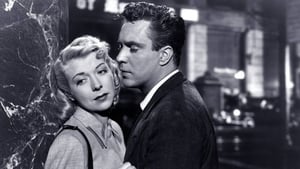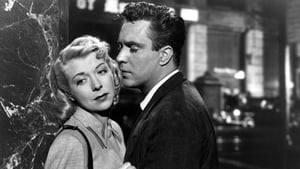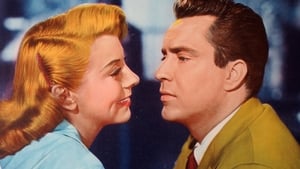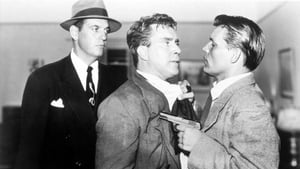Video Sources 0 Views
- Watch trailer
- D.O.A. 1949 Colorized

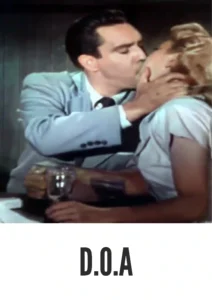
Synopsis
Table of Contents
Toggle
Step into the shadowy world of D.O.A., a riveting film noir thriller from 1949, now brilliantly colorized for a fresh viewing experience. This iconic film, directed by Rudolph Maté, weaves a compelling narrative filled with tension, mystery, and an unforgettable performance by Edmond O’Brien as Frank Bigelow. As one of the defining films of its genre, D.O.A. captivates audiences with its intricate plot and striking visuals, making it a must-watch for both classic film fans and newcomers alike.
D.O.A. follows the harrowing journey of Frank Bigelow (Edmond O’Brien), a mild-mannered accountant who discovers he has been poisoned with a slow-acting toxin. With only days to live, Frank embarks on a frantic quest to uncover the identity of his murderer before time runs out. As he delves deeper into the dark underbelly of society, he encounters a cast of intriguing characters, including his love interest, Paula (Pamela Britton), who becomes embroiled in his desperate search for justice.The film unfolds as a tense thriller, filled with unexpected twists and turns that keep viewers on the edge of their seats. Frank’s investigation leads him through seedy bars, encounters with shady figures, and ultimately to a shocking revelation that ties together the threads of betrayal and greed. The innovative use of flashbacks to narrate Frank’s story adds depth to the narrative, enhancing the viewer’s engagement with his plight.
The film boasts an impressive cast that brings this intense story to life:
- Edmond O’Brien as Frank Bigelow
- Pamela Britton as Paula
- John M. O’Sullivan as Police Captain
- Luther Adler as The Man
- William Ching as Dr. Phillips
D.O.A. is classified as a film noir thriller, characterized by its dark themes, moral ambiguity, and complex characters. The film’s atmospheric cinematography and haunting score amplify its suspenseful tone, making it a quintessential example of post-war American cinema.
Released in 1949, D.O.A. emerged during the peak of the film noir movement in Hollywood. This period was marked by a fascination with crime dramas that explored themes of existential dread and moral complexity. The film reflects societal anxieties following World War II, capturing the disillusionment and paranoia prevalent in American culture at the time. While D.O.A. may not be as widely recognized as other noir classics like Double Indemnity or The Maltese Falcon, it remains a significant entry in the genre that showcases innovative storytelling techniques and strong performances.
This colorized version of D.O.A. has been meticulously restored using advanced digital techniques to enhance its visual appeal while preserving the film’s original atmosphere. The colorization process involved analyzing the grayscale tones of the original footage and carefully assigning colors to each scene to maintain authenticity. This modern approach breathes new life into the film’s characters and settings, making it more accessible to contemporary audiences who may prefer color films over black-and-white presentations.
- : Rudolph Maté
- : Russell Rouse, Clarence Greene
- : Ernest Laszlo
- : George Hively
- : Allied Artists Pictures
- : United Artists
- : 84 minutes
- : MP4
- : HD (1080p)
- : Compatible with most devices including smartphones, tablets, computers, and smart TVs.
Upon its release, D.O.A. received critical acclaim for its innovative narrative structure and compelling performances. It is often regarded as one of the standout films in the film noir genre due to its unique premise and strong character development. While it may not have achieved the same level of fame as some contemporaries, it has garnered a dedicated following over the years and continues to be studied for its contributions to cinematic storytelling.
- : What is D.O.A. about?
- A: D.O.A. follows an accountant who discovers he has been poisoned and races against time to find his murderer before he dies.
- : Is D.O.A. (1949) considered a classic?
- A: Yes, D.O.A. is regarded as a classic film noir that showcases innovative storytelling techniques within its genre.
- : Is this version of D.O.A. colorized?
- A: Yes, this version has been professionally colorized to enhance visual appeal while preserving its original feel.
- : What makes D.O.A. interesting for noir fans?
- A: The film offers a unique perspective on moral ambiguity and features strong performances that exemplify classic noir themes.
- : What is the download format?
- A: The download format is MP4, compatible with most devices.
- : What resolution is available for download?
- A: The resolution is HD (1080p), ensuring high-quality viewing.
Watch D.O.A. Today!
